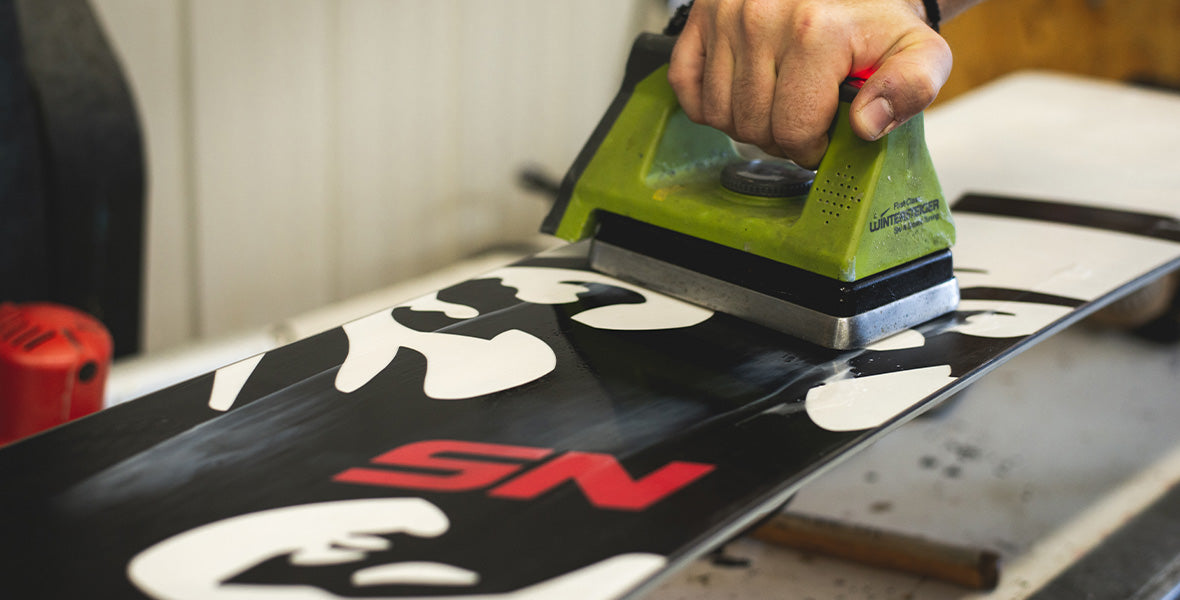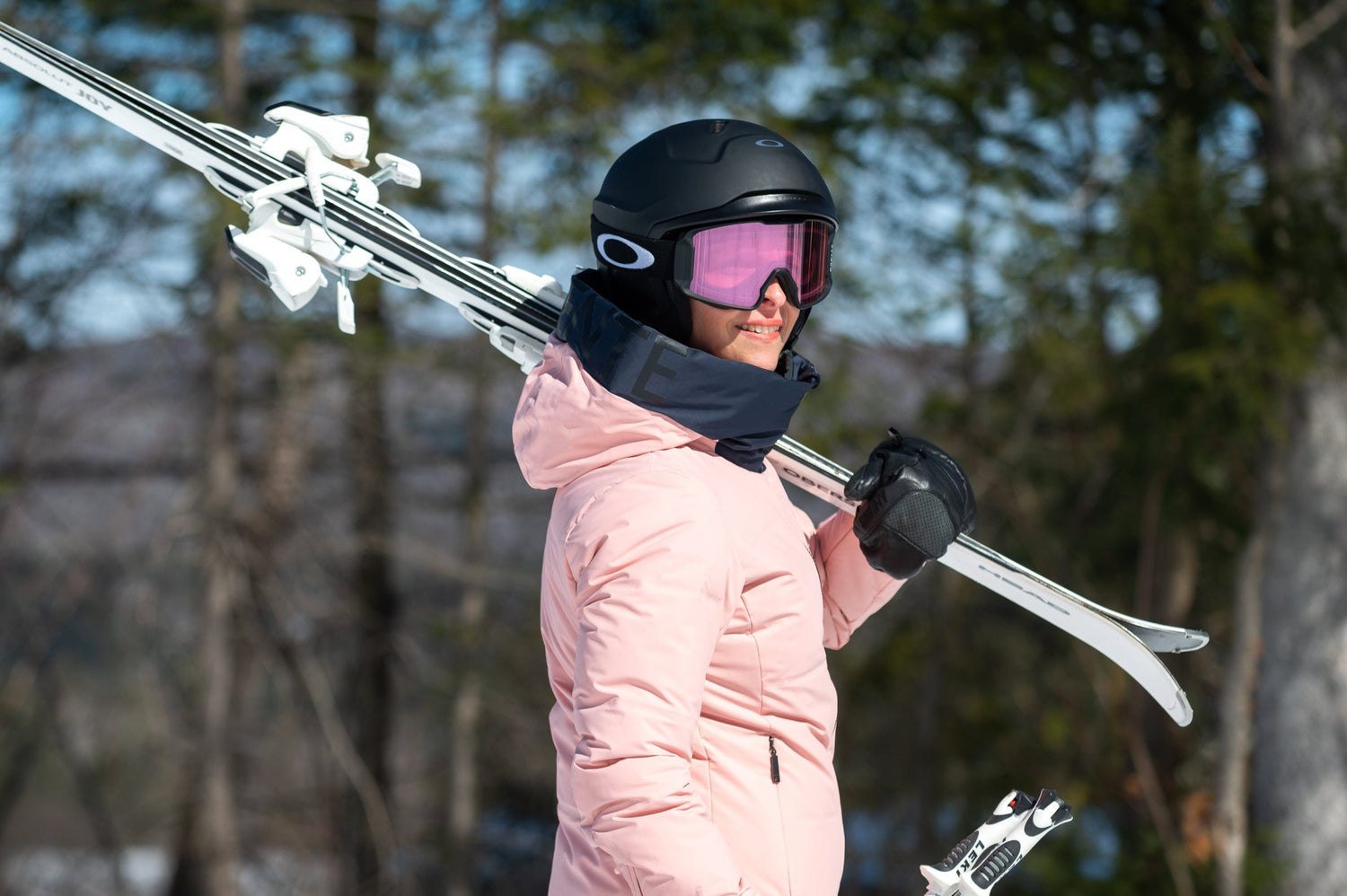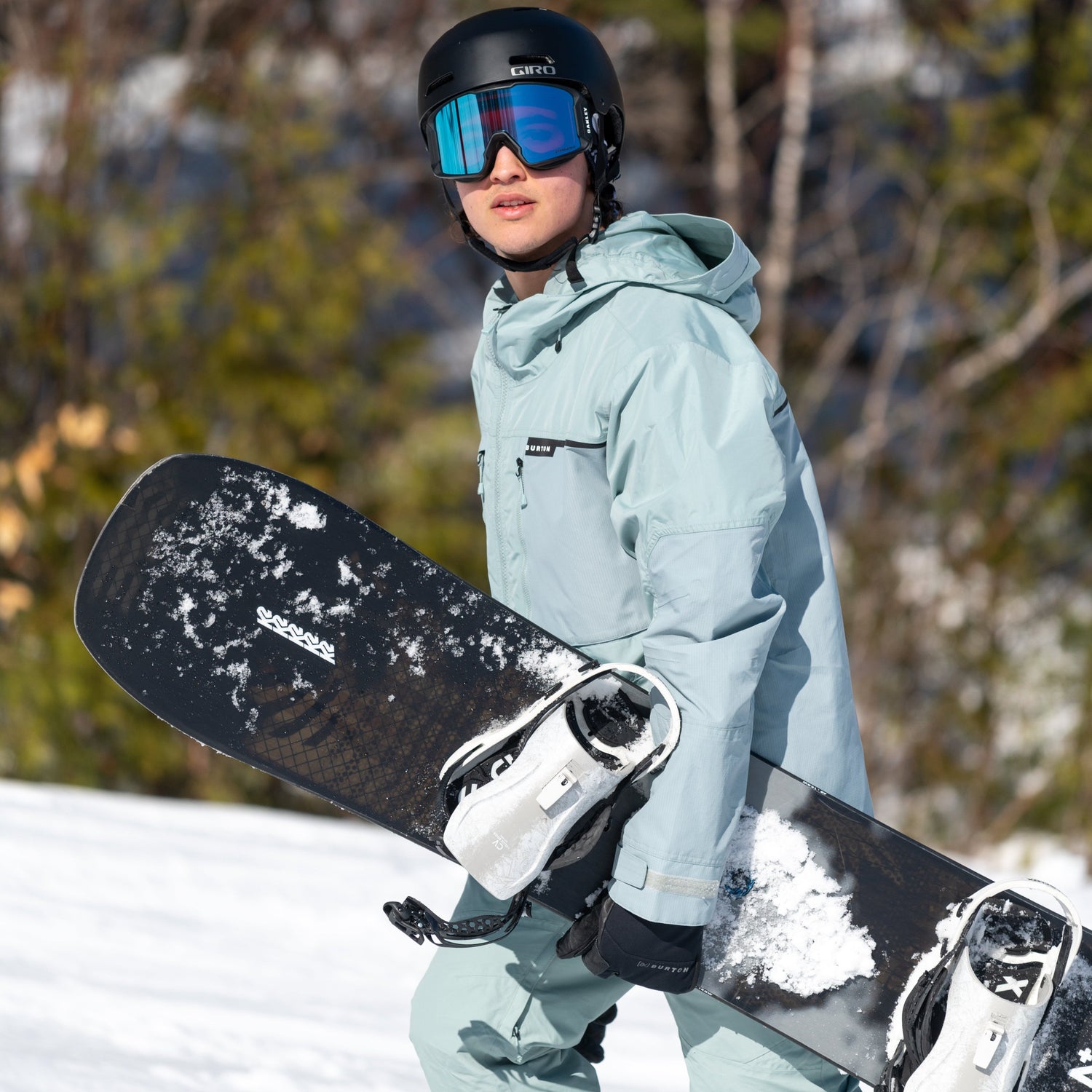1. When to maintain your skis and snowboard?
At the beginning and end of the season and between outings, full maintenance is essential. Done regularly, it increases the lifespan of skis and snowboards.
For eastern skiers, given the conditions and somewhat less abundant powder—although it’s out there if you look for it—maintenance should be done at least every five to ten outings. In an ideal world, the wax should be redone for every day spent in the mountains. There is no limit to the amount of maintenance that can be done during a ski season.
See Our Tuning Services and Rates

2. Why maintain your skis and snowboard?
A poorly maintained board or skis can quickly ruin your day. You could end up with edges that don’t bite and a base that doesn’t glide. In short, there won’t be much you enjoy during your day on the mountain!
Regular maintenance lengthens your gear’s lifespan and keeps it in good shape. Waxing and sharpening gear ensures a positive experience on the ski slopes for both newbies and experts.
3. What are the signs that gear needs to be waxed and sharpened?
What are the visible signs that equipment needs to be maintained? Whitening on the base, which means it’s dry, indicates that it’s high time for a good waxing. It’s also necessary if the glide isn’t smooth and you’re feeling a braking sensation when going downhill.
Edges that no longer bite into hardened surfaces and have trouble holding a turn are signs that it’s time to sharpen them. You can also check your edges for rust.
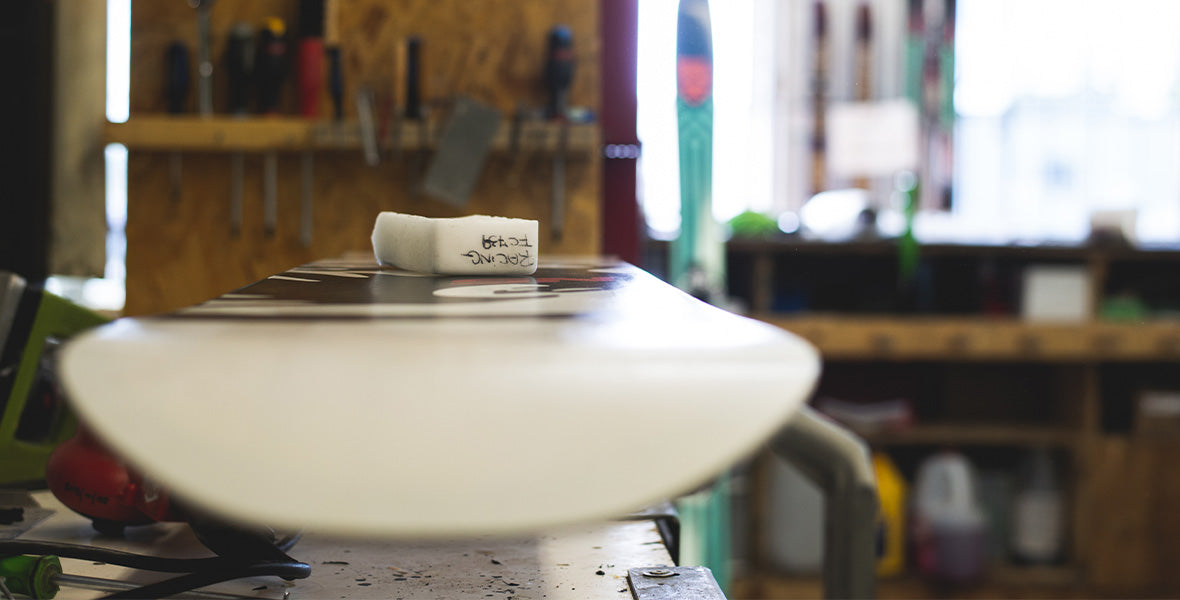
4. How to perform a full maintenance on your skis or snowboard?
Complete maintenance begins with resurfacing the base; in other words, making it as smooth and straight as possible. For both skis and snowboards, refreshing the base with a stone grinder is the foundation for what comes next because a properly resurfaced base enables sharpening the edges. And in the East, sharp edges are essential.
Once the edges have been sharpened, the same stone grinder used to resurface the base recreates a structure pattern on the skis that controls the film of water the ski or snowboard slides on. In reality, 90% of skiers and snowboarders won’t feel the difference in the size of the structure pattern created. This detail only becomes important when the stopwatch is in play during competitions.
Applying wax is one of the longest steps. Done manually, waxing makes for a smooth glide and protects the base. Plus, certain repairs can be done as needed.
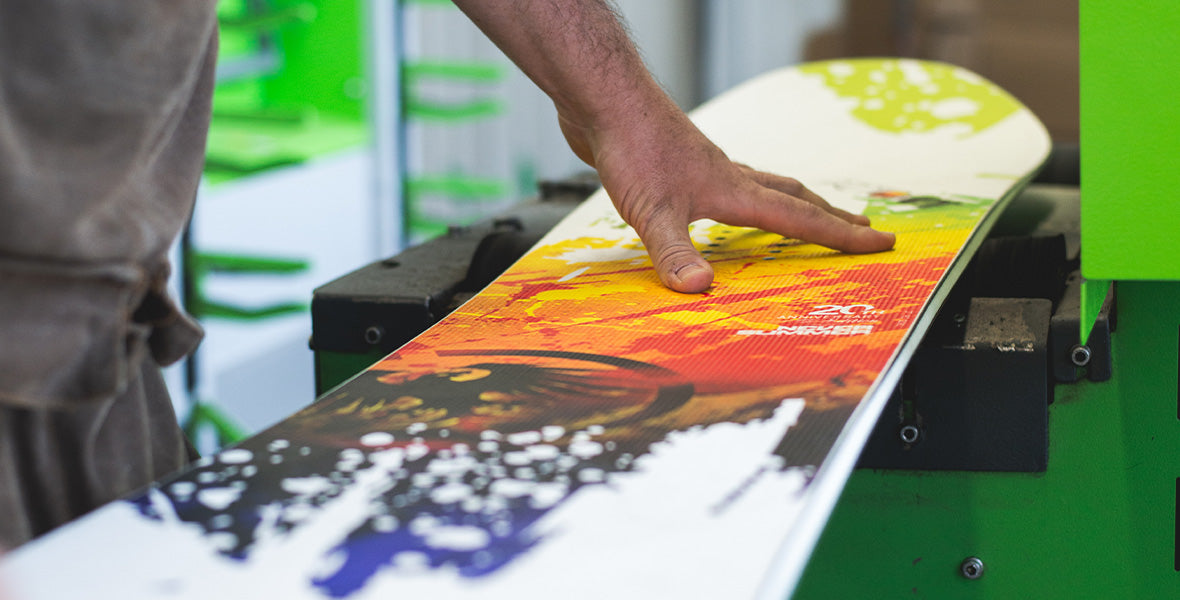
5. How do I store downhill skiing and snowboarding gear?
After each use, be sure to let your alpine skis or snowboard dry thoroughly before being put in storage. Don’t leave them in your ski case or a ski bag. Moisture rusts the edges and can weaken the core.
You can store them vertically or horizontally, depending on the storage space you have at home. For alpine skis, make sure the tips don’t touch. You can use a Velcro ski strap with a rubber strip that keeps the tips apart.
6. How about tuning your gear at home with a ski maintenance kit?
If you have time, a garage, patience and a good playlist, get some high-quality universal wax, an iron, a scraper and a finishing brush so you can wax your skis at home between work meetings.
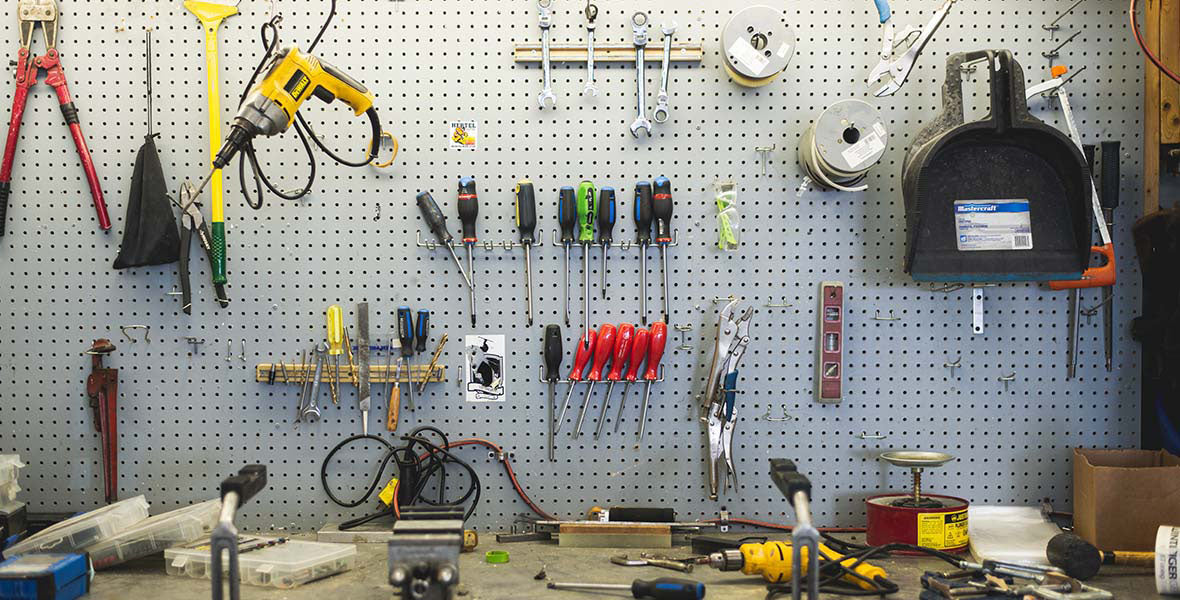
7. Do I need to wax and sharpen alpine touring skis and splitboards?
Although this gear sees powder more often than ice, the base and edges of touring gear should be maintained. Climbing skins don’t stick as well on a dried out surface as on a properly waxed base.
8. How much does maintenance cost at Oberson?
After an inspection of your equipment, various maintenance packages are available based on your needs. For more information, consult the service offerings at our two repair shops in Laval and Brossard.
